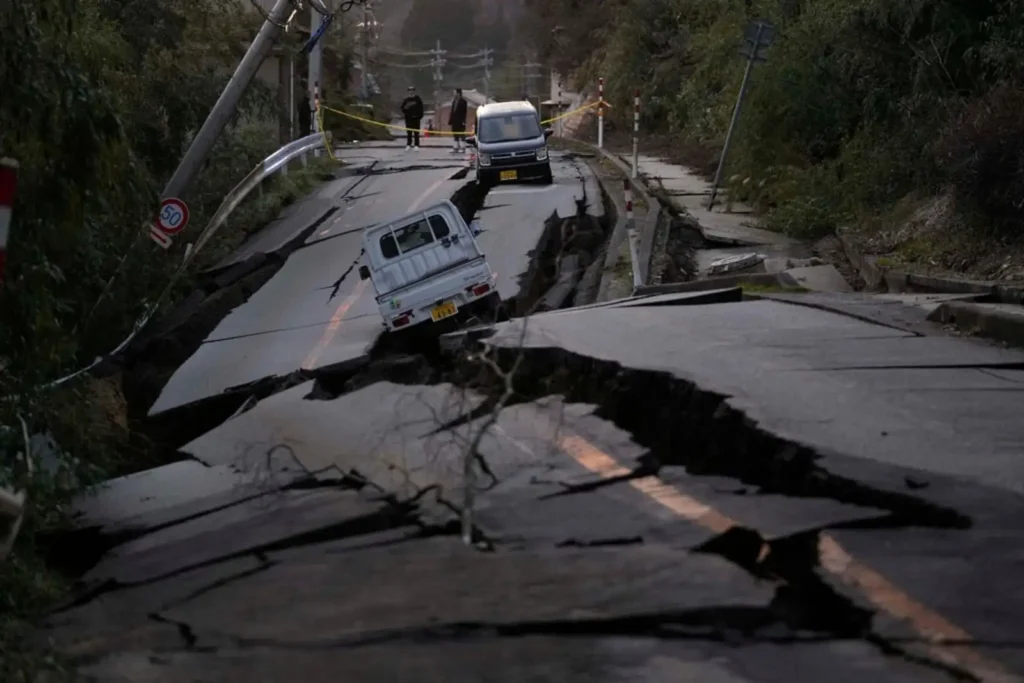
Introduction
Japan’s Kyushu Recent Earthquake come, It is located in one of the most seismically active regions on Earth, frequently experiences earthquakes due to its position on the Pacific Ring of Fire. On April 2, 2025, a magnitude 6.0 earthquake struck the Kyushu region, reigniting concerns about seismic preparedness and future risks.
This article explores Japan’s earthquake history, the latest developments, its impact, and crucial safety measures that can help protect lives.
A Look at Japan’s Earthquake History
The April 2 earthquake is part of a long history of seismic activity in Japan. Some of the most devastating earthquakes include:
2011 Tōhoku Earthquake (M9.1) – Triggered a massive tsunami, resulting in nearly 20,000 deaths and the Fukushima nuclear disaster.
1995 Great Hanshin Earthquake (M6.9) – Hit Kobe, causing over 6,000 fatalities.
1923 Great Kantō Earthquake (M7.9) – Destroyed Tokyo and Yokohama, leading to over 140,000 deaths.
Japan has since strengthened its earthquake preparedness, but with frequent tremors, vigilance remains essential.
April 2, 2025, Kyushu Earthquake: What We Know
At 7:34 PM local time, a magnitude 6.0 earthquake struck off the coast of Kagoshima Prefecture, with a depth of 40 km.
Key Facts:
Epicenter: Offshore near Kagoshima Prefecture
Depth: 40 km
Tsunami Warning: None issued
Casualties: No immediate reports
Damage Assessment: Ongoing
Japan’s advanced building codes and early warning systems played a crucial role in preventing large-scale destruction. Authorities continue monitoring aftershocks and structural integrity.
Impact on Infrastructure and Economy
While this earthquake was not as catastrophic as past events, it still caused disruptions:
Transportation: Temporary suspension of Shinkansen (bullet train) services for safety inspections.
Power Supply: Some areas experienced brief outages.
Businesses: Insurance claims are rising due to minor property damages.
Tourism: Some flight delays and travel advisories were issued.
Communication Services: Temporary network congestion affected mobile and internet services in certain regions.
Japan’s Disaster Response: Immediate Actions
Japan’s highly efficient disaster response system swiftly mobilized:
Rescue Teams Deployed – Firefighters, police, and emergency responders checked for damages and injuries.
Public Alerts Issued – The Japan Meteorological Agency (JMA) provided real-time updates.
Shelters Opened – Evacuation centers were set up for those in need.
Structural Inspections Conducted – Buildings, roads, and bridges were assessed for safety.
Medical Assistance Readiness – Hospitals were placed on high alert to handle potential injuries.
Is a Bigger Earthquake Coming? Japan’s Long-Term Forecast
Just days before this earthquake, on March 31, 2025, the Japanese government released a report warning of a potential megaquake in the Nankai Trough, a highly active seismic zone near Tokyo.
Predicted Impact of a Nankai Trough Earthquake:
80% probability of occurring within 30 years.
Potential casualties: Up to 300,000 lives at risk.
Estimated economic damage: $1.8 trillion.
Tsunami threat: Likely to impact Japan’s Pacific coastline.
Experts emphasize that preparedness is critical to reducing damage and casualties.
Japan’s Technological Advancements in Earthquake Safety
Japan leads the world in seismic-resistant technology, including:
Shock-Absorbing Foundations – Modern buildings are equipped with seismic isolation systems.
J-Alert System – Real-time earthquake warnings sent via TV, radio, and mobile networks.
Tsunami Barriers – Strengthened coastal defenses reduce the impact of tsunamis.
AI-Powered Predictions – Machine learning is enhancing earthquake forecasting accuracy.
Smart Infrastructure Sensors – Bridges, buildings, and roads are equipped with real-time monitoring sensors to detect structural weaknesses.
How to Stay Safe: Earthquake Preparedness Tips
While Japan is well-prepared, individual readiness is vital. Here are key safety measures:
Before an Earthquake:
✔ Secure furniture: Bolt bookshelves and heavy objects to walls. ✔ Prepare an emergency kit: Stock water, food, first-aid supplies, and important documents. ✔ Identify evacuation routes: Know the nearest shelters and open spaces. ✔ Install earthquake alarms: Use apps and government alert systems for real-time warnings. ✔ Backup Important Data: Store digital copies of crucial documents on cloud storage.
During an Earthquake:
✅ If indoors: Take cover under a sturdy table, stay away from windows, and avoid elevators. ✅ If outdoors: Move away from buildings, power lines, and trees; find an open area. ✅ If in a vehicle: Pull over safely and stay inside; avoid stopping under bridges. ✅ If near the coast: Move to higher ground immediately in case of a tsunami risk.
After an Earthquake:
✔ Check for injuries: Apply first aid as needed. ✔ Monitor official updates: Follow alerts from the Japan Meteorological Agency. ✔ Be ready for aftershocks: These can occur minutes, hours, or days later. ✔ Inspect surroundings: If your home is damaged, evacuate immediately. ✔ Avoid coastal areas: Tsunamis can occur minutes after a quake. ✔ Use Battery-Powered Radios: In case of power failure, a battery-powered radio can provide emergency updates.
Conclusion: Staying Prepared for the Future
Earthquakes are a reality in Japan, but preparedness can save lives. The April 2, 2025 earthquake serves as a reminder of the importance of disaster readiness. While Japan’s infrastructure is built to withstand strong tremors, individual actions and government policies play a vital role in minimizing risks.
Stay Informed with Reliable Sources:
📌 Japan Meteorological Agency (JMA): https://www.jma.go.jp 📌 Kyodo News Updates: https://english.kyodonews.net 📌 Financial Times’ Earthquake Analysis: https://www.ft.com
By staying informed and following safety measures, we can contribute to a safer and more prepared society.
